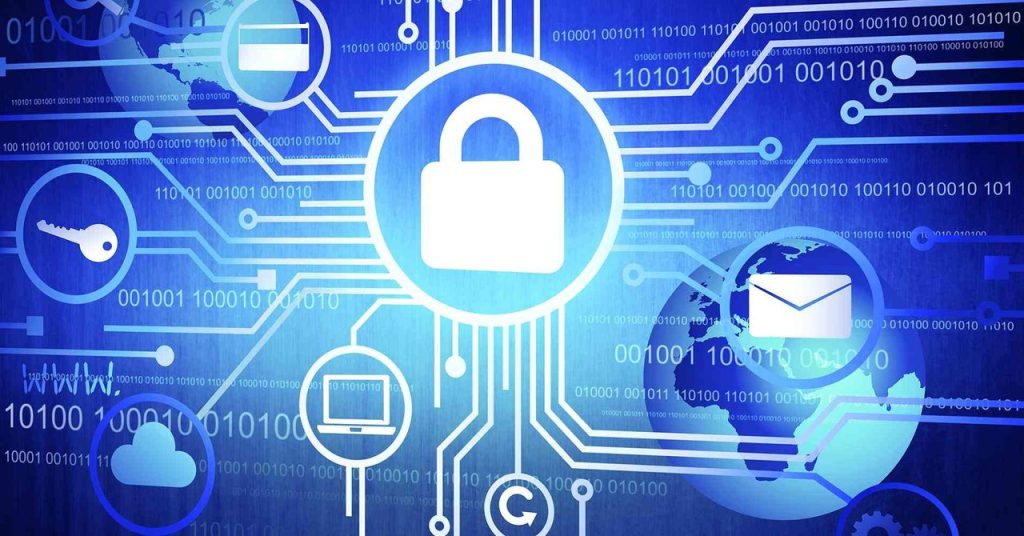Introduction
In today’s digital era, data privacy and security have become paramount concerns for businesses across all sectors. As enterprises increasingly adopt blockchain technology to manage their operations, particularly for highly sensitive data, ensuring the security and confidentiality of that data is essential. Enterprise blockchains, with their ability to offer private and permissioned networks, provide businesses with the ideal platform for secure data management.
Two crucial features of enterprise blockchains—data encryption and identity authentication—play an indispensable role in ensuring that sensitive data is protected and that only authorized parties can access it. In this article, we will explore how enterprise blockchains leverage encryption and identity management systems to enhance data privacy and security, offering real-world use cases, technical considerations, and future trends.
1. Understanding the Importance of Data Privacy and Security
1.1 The Rising Importance of Data Privacy
In an increasingly interconnected world, data privacy concerns have become a pressing issue. With the General Data Protection Regulation (GDPR) in Europe, California Consumer Privacy Act (CCPA) in the U.S., and various other privacy laws around the globe, businesses are under significant pressure to safeguard their customers’ personal and financial information. Any breaches or mishandling of such data can lead to severe legal consequences, loss of customer trust, and financial penalties.
As businesses adopt digital transformation strategies, they must secure sensitive data across multiple touchpoints—from customer information and financial transactions to intellectual property. With blockchain technology, enterprises can have greater control over data access and authentication, ensuring confidentiality, integrity, and availability.
1.2 Blockchain’s Role in Enhancing Data Security
Blockchain’s distributed ledger technology offers several features that make it an attractive solution for securing business transactions:
- Immutability: Once data is recorded on a blockchain, it cannot be altered or deleted, ensuring that transaction records are tamper-proof and auditable.
- Transparency: Blockchain provides transparency in transactions, but the data can remain private through cryptographic techniques, ensuring that only authorized parties can access sensitive information.
- Decentralization: Since the blockchain operates across a network of nodes, it is less vulnerable to centralized attacks, such as those that target traditional centralized databases.
However, while blockchain can offer security benefits, it must be coupled with strong encryption and identity authentication mechanisms to ensure that only authorized parties can access, view, and modify data on the blockchain.
2. The Role of Data Encryption in Enterprise Blockchains
2.1 What is Data Encryption?
Data encryption is the process of converting plain text or readable data into a coded format (ciphertext) to prevent unauthorized access. Encryption ensures that sensitive information is only accessible to authorized parties who possess the correct decryption key. In the context of enterprise blockchains, encryption is used to safeguard both data at rest (stored data) and in transit (data being transferred).
Encryption plays a crucial role in the following aspects of enterprise blockchains:
- Protecting Sensitive Data: Blockchain technology provides transparency but does not inherently ensure privacy. To protect sensitive data, encryption is used to make sure that only authorized participants can read the information stored on the blockchain.
- Preventing Data Tampering: The integrity of data is a central feature of blockchain. Encryption adds an additional layer of protection by ensuring that only the intended parties can modify or update the data stored on the blockchain.
2.2 Cryptographic Techniques Used in Enterprise Blockchains
There are various encryption methods employed in enterprise blockchains to safeguard data. These include:
2.2.1 Symmetric Encryption
In symmetric encryption, the same key is used to both encrypt and decrypt the data. This method is fast and efficient but requires a secure mechanism for distributing and storing the encryption key.
- Advanced Encryption Standard (AES): AES is one of the most widely used symmetric encryption algorithms and is commonly employed in enterprise blockchains to protect data at rest.
2.2.2 Asymmetric Encryption
Asymmetric encryption uses a pair of keys: a public key (which can be shared) and a private key (which remains confidential). Data encrypted with one key can only be decrypted using the corresponding key. Asymmetric encryption is typically used in blockchain transactions, where the sender’s private key signs the transaction, and the receiver’s public key can verify the authenticity.
- Elliptic Curve Cryptography (ECC): ECC is an asymmetric encryption method widely used in blockchain systems for digital signatures and key generation due to its efficiency and high level of security.
2.2.3 Hashing
Hashing is a cryptographic technique that converts input data (such as a transaction) into a fixed-length string of characters. This process is one-way—meaning the original data cannot be reconstructed from the hash. Hashing is used to ensure data integrity and is a fundamental component of blockchain consensus algorithms like Proof of Work (PoW) and Proof of Stake (PoS).
- SHA-256: The SHA-256 (Secure Hash Algorithm 256) is commonly used in blockchain networks, including Bitcoin and Ethereum, to create unique, tamper-evident digital fingerprints of data.
2.3 The Role of Encryption in Privacy-Preserving Blockchain
While blockchain inherently offers transparency, privacy-preserving mechanisms are essential for enterprises that wish to keep sensitive data confidential. Zero-knowledge proofs (ZKPs), for example, allow participants to prove that a statement is true without revealing any additional information. ZKPs are gaining popularity as a way to ensure privacy on enterprise blockchains without compromising the integrity of the system.
- zk-SNARKs (Zero-Knowledge Succinct Non-Interactive Arguments of Knowledge): This cryptographic technique allows a party to prove they possess certain information without revealing the information itself, ensuring privacy on the blockchain.

3. The Importance of Identity Authentication in Enterprise Blockchains
3.1 What is Identity Authentication?
Identity authentication is the process of verifying the identity of an individual or entity before allowing them access to certain resources, such as sensitive data, systems, or applications. In the context of enterprise blockchains, identity authentication ensures that only authorized participants can interact with the blockchain, making it a critical aspect of maintaining both security and privacy.
Without robust authentication, malicious actors could gain unauthorized access to the blockchain network, tamper with data, or initiate fraudulent transactions. This is particularly critical in enterprise environments, where the integrity of financial records, intellectual property, and personal data must be preserved.
3.2 Types of Identity Authentication in Enterprise Blockchains
3.2.1 Public Key Infrastructure (PKI)
Public Key Infrastructure (PKI) is a widely used framework for managing digital identities and encryption keys. In a PKI system, each participant in the blockchain network is assigned a public-private key pair. The private key is used for signing transactions, while the public key serves as the participant’s digital identity.
- Digital Certificates: In PKI, digital certificates are used to authenticate the identity of a user. These certificates are issued by a trusted Certificate Authority (CA) and provide a verifiable proof of identity.
3.2.2 Multi-Factor Authentication (MFA)
Multi-factor authentication (MFA) requires users to provide two or more verification factors to authenticate their identity. This can include something they know (password), something they have (smartphone or hardware token), or something they are (biometric data). In enterprise blockchain applications, MFA can enhance security by ensuring that only authorized personnel can approve transactions or access sensitive data.
3.2.3 Role-Based Access Control (RBAC)
Role-Based Access Control (RBAC) is a system for managing access permissions based on the roles of participants within an enterprise blockchain network. For example, a manager may have access to higher-level data or actions than a general employee. This hierarchical model ensures that participants only access the resources and information necessary for their roles, reducing the risk of unauthorized access.
3.3 Identity and Access Management (IAM) Systems
Identity and Access Management (IAM) systems are used to control and manage user identities within an enterprise blockchain network. These systems allow businesses to authenticate and authorize participants while enforcing security policies across the network.
- Single Sign-On (SSO): SSO allows users to authenticate once and gain access to all systems within the network. This is particularly useful in enterprise environments with multiple applications, ensuring seamless access while maintaining strong authentication protocols.
4. The Future of Data Encryption and Identity Authentication in Enterprise Blockchains
4.1 Advances in Quantum-Resistant Cryptography
As quantum computing advances, traditional encryption methods may become vulnerable to attacks that could break the cryptographic algorithms currently used in blockchain. This has led to the development of quantum-resistant cryptography, which is designed to withstand the capabilities of quantum computers.
Blockchain projects are already exploring quantum-resistant encryption algorithms to ensure the long-term security of blockchain networks, including enterprise blockchains. For example, Lattice-based encryption and hash-based cryptography are among the promising candidates.
4.2 Decentralized Identity Management
Decentralized identity management (DID) is an emerging field that allows individuals and organizations to control their own identities without relying on a central authority. DID solutions are built on blockchain technology and provide a secure, private, and user-centric method of authentication.
In the future, enterprise blockchains may leverage DID systems to authenticate users across multiple platforms without compromising their privacy.
Conclusion
As data privacy and security continue to be critical concerns for enterprises worldwide, blockchain technology offers powerful tools for data encryption and identity authentication. These features, combined with blockchain’s inherent advantages of decentralization and immutability, provide a robust foundation for securing sensitive data and maintaining trust in digital interactions.
Through strong encryption practices, including symmetric, asymmetric encryption, and hashing, along with secure identity authentication methods like PKI, MFA, and IAM, enterprise blockchains ensure that only authorized participants can access and modify data.
Looking ahead, the continued development of quantum-resistant cryptography and decentralized identity management promises to further enhance the security and privacy features of enterprise blockchains, solidifying their role as a crucial technology for securing sensitive data in the digital age.

















































